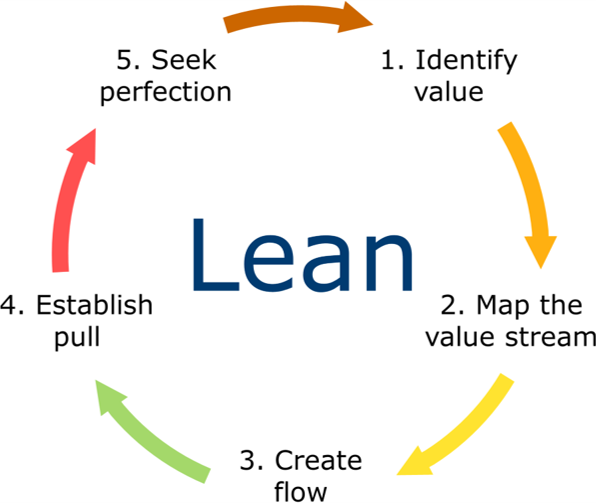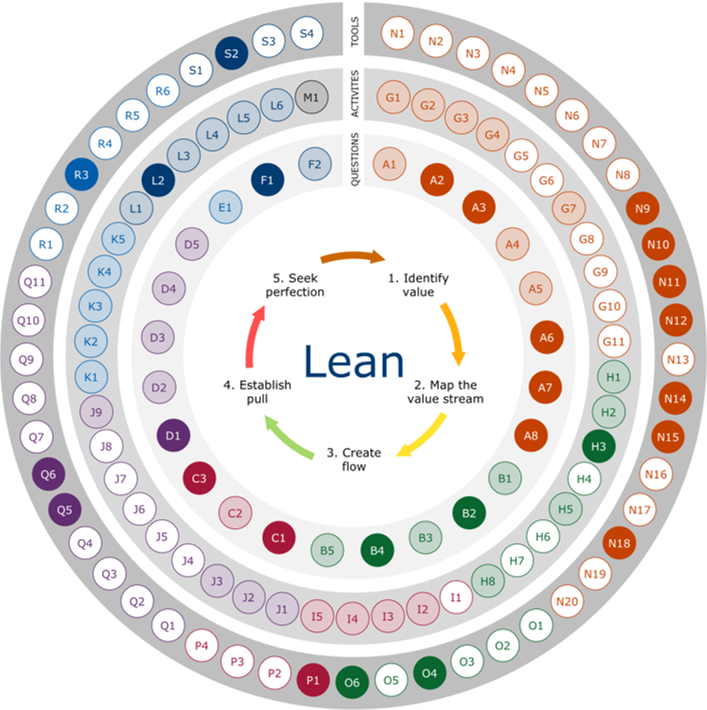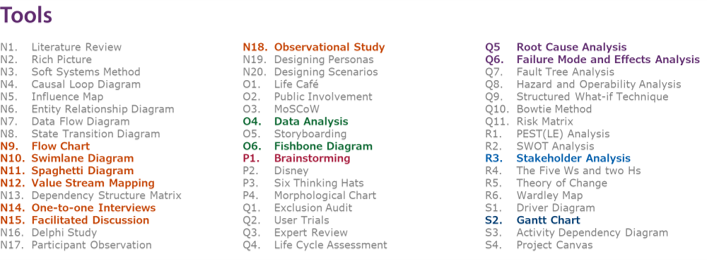The Lean Thinking model is a process to facilitate improvement in patient care with existing resources, meaning the same things can be achieved using fewer people.
Contents
Introduction
Lean thinking is an approach to improvement developed at Toyota in the 1950s to create the Toyota Production System. It is a strategic approach that focuses on dramatically improving flow in the value stream and eliminating waste. It initially came to prominence in health and care systems through The Productive Series: Releasing Time to Care1, a programme developed by the NHS institute for Innovation and Improvement and has been the subject of other reports on methods for improvement2.
Lean is typically a team process involving many people across an organisation. The Virginia Mason Medical Center in Seattle, Washington has been using lean thinking principles since 2002. By working to eliminate waste, they have created more capacity in existing programmes and practices so that planned expansions were scrapped, saving significant capital expenses. Using lean principles, staff, providers and patients have continuously improved or redesigned processes to eliminate waste, reduce rework and improve quality. Five UK Trusts are now piloting Virginia Mason’s approach.
Lean thinking is founded on five principles designed to:
- Specify the value desired by the patient,
- Map the value stream and identify those steps that do not create value,
- Create a smooth flow through the value-added steps,
- Establish pull between the steps,
- Seek perfection so that the number of steps and the amount of time and information needed to serve the patient are minimised.
In essence, it focuses on improving patient flow, reducing opportunities for error, developing standards and engaging teams in improvement, and it is increasingly used in conjunction with Six Sigma3.
Footnotes
- Putting patients first — The Productive Series. NHS Institute for Improvement, 2012.
- Lean thinking for the NHS. Jones and Mitchell, The NHS Confederation, 2006.
- Lean Six Sigma: some basic concepts. Bevan, Westwood, Crowe and O’Connor, NHS Institute for Improvement, 2013.
Getting Started
Identify value
The first principle of lean thinking relates to general project issues, such as: the creation of the team, definition of the project aim, scope and plans, and creation of a sense of urgency; exploration of the problem and its context; and investigation of the high-level system processes, their elements, interfaces and boundaries. There is particular focus of the definition of value from the users’ perspective, through the identification of patients and other stakeholders, capture of their views, and understanding of their problems, needs and expectations.
Map the value stream
The second principle focuses on the elaboration of the high-level system processes previously captured. Process maps are used to visualise the current end-to-end processes in some detail, distinguishing value-add and non-value-add steps. For a step to add value, a user or stakeholder must care about it, it must change them or knowledge about them, and it must executed right first time. If these criterion are not met, that step is deemed to be waste. The timing of the process steps is also reviewed in the light of identifiable priorities, potential bottlenecks and constraints.
Create flow
The third principle focuses on the elimination of waste, avoidance of uneven flow, batching and queuing, and establishment of a smooth flow of users or other entities in the value stream. Lean fundamentals and standard solutions to common problems are considered to develop ideas for the elimination of waste and improvement of flow. A new value stream is proposed and gaps between this and the current state identified and reviewed.
Establish pull
The fourth principle focuses on letting the users or stakeholders pull value rather than pushing it, without delay or reliance on excessive resources. Creation of a pull mechanism aligns with the need for smooth flow, where every step in the process should pull people, skills, materials and information as required. This requires good evaluation of resource usage against demand, and communication and visibility of the progress being made.
Seek perfection
The fifth principle emphasises the importance of maintaining the gains made after the implementation of changes and the continuous effort for achieving perfection. The performance of the revised system, along with the perceptions of users and stakeholders about the new practices, are monitored. This involves a mix of training, measurement, documentation and visualisation in order to remove barriers, and sustain and spread improvements.
Comparison
The questions, activities and tools from this toolkit can be mapped to the Lean Thinking model of improvement to better understand the relative coverage of the two approaches. Resource material for the Lean Thinking model has been analysed in detail to ascertain how it relates to the systems approach in this toolkit, both in terms of the mention of common topics and in terms of the provision of detailed descriptions or advice relating to the same topics.
Questions, activities and tools that have particular potential to add value to the Lean Thinking model:
Feedback
We would welcome your feedback on this page:
Privacy policy. If your feedback comments warrant follow-up communication, we will send you an email using the details you have provided. Feedback comments are anonymized and then stored on our file server
Read more about how we use your personal data. Any e-mails that are sent or received are stored on our mail server for up to 24 months.









